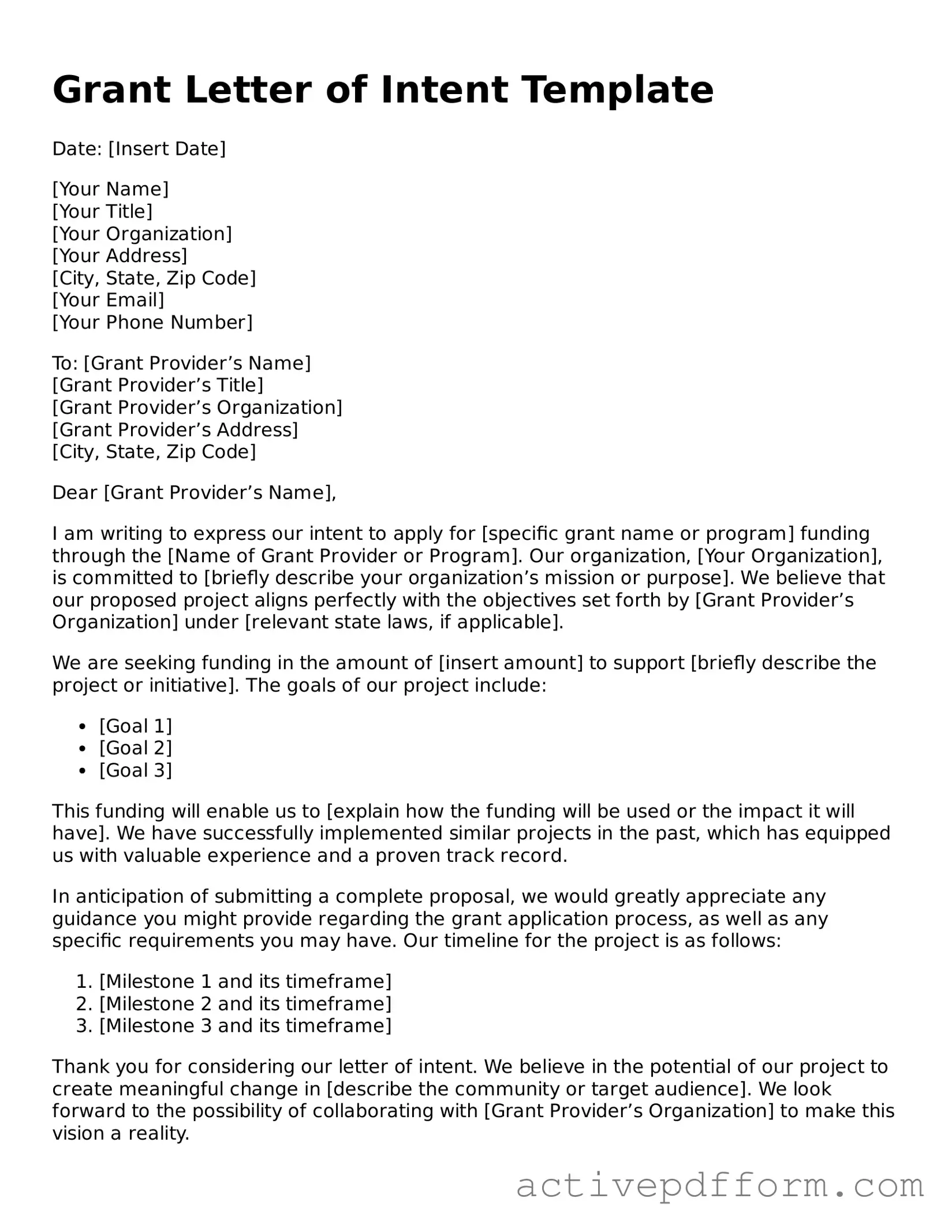What is a Grant Letter of Intent (LOI)?
A Grant Letter of Intent is a preliminary document submitted to a funding organization to express interest in applying for a grant. It outlines the basic idea of the proposed project, its objectives, and the anticipated impact. An LOI helps the funding organization assess whether the project aligns with its priorities before a full application is submitted.
Why is submitting an LOI important?
Submitting an LOI is often a required step in the grant application process. It allows the funding organization to gauge the relevance of your project. Additionally, it can save time and resources for both the applicant and the funder by determining if a full proposal is warranted.
What information should be included in the LOI?
An effective LOI typically includes a brief description of the organization, the project’s goals, the target population, the intended outcomes, and a budget overview. It should also outline how the project aligns with the funder's mission and priorities.
How long should the LOI be?
The length of an LOI can vary depending on the funder’s guidelines. Generally, it should be concise, usually ranging from one to three pages. Clarity and brevity are essential to ensure that your main points are communicated effectively.
Is there a specific format required for the LOI?
Many funding organizations provide specific formatting guidelines for the LOI. Common requirements may include font size, margins, and required sections. Always check the funder’s website or guidelines to ensure compliance with their expectations.
What is the typical timeline for submitting an LOI?
Timelines can vary significantly based on the funder. Some organizations have rolling deadlines, while others may have specific submission periods. It's crucial to plan ahead and submit your LOI well before any stated deadlines to allow for any unforeseen issues.
Can I submit an LOI if I am unsure about my project?
Submitting an LOI can be a useful way to clarify your project ideas. If you are uncertain, consider reaching out to the funder for guidance. They may provide feedback or suggestions that can help refine your project before you submit a full proposal.
What happens after I submit my LOI?
After submission, the funding organization will review your LOI to determine if it aligns with their funding priorities. They may invite you to submit a full proposal, request additional information, or inform you that your project does not meet their criteria. Be prepared for any of these outcomes.
Can I receive feedback on my LOI?
Some funding organizations may offer feedback on LOIs, especially if they are interested in your project but require more detail. However, not all organizations provide this service. If feedback is important to you, consider asking about it during the submission process.
